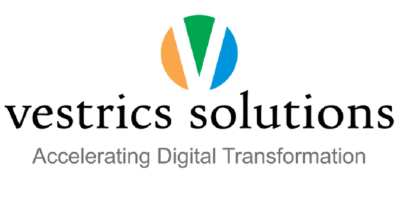Small and medium-sized enterprises (SMEs) are vital to the Indian economy, contributing to job creation, economic growth, and innovation. However, SMEs often face various challenges impacting their productivity and profitability. These challenges may include a need for more resources, limited access to finance, intense competition, and changing customer demands.
There are several ways with which the SMEs can look forward to improving their efficiencies, productivity and ultimately leading to profits. So let us look at some of the frontiers which can be leveraged for boosting the productivity and realizing increased revenue for SMEs:
Embrace Technology
One of the most effective ways for SMEs to improve productivity and profitability is by embracing technology. There are a variety of technological tools that SMEs can use to streamline their operations and increase efficiency. For example, cloud-based software can help businesses automate accounting, inventory management, and customer relationship management tasks. Additionally, e-commerce platforms can help SMEs reach a broader customer base and boost sales.
One way for SMEs to embrace technology is by executing an Enterprise Resource Planning (ERP) system. An ERP system integrates a range of business functions into a single system. By implementing an ERP system, SMEs can improve operational efficiency, reduce costs, and increase productivity. Another way for SMEs to embrace technology is by using social media platforms to connect with customers and promote their products or services. Platforms like Facebook, Instagram, and Twitter allow SMEs to reach a larger audience, build brand awareness, and engage with customers. By using social media effectively, SMEs can create a robust online presence, generate leads, and increase sales.
Invest in Employee Training and Development
Another critical factor in improving productivity is investing in employee training and development. SMEs can increase efficiency and productivity by providing employees with the skills and knowledge they need to perform their jobs more effectively. Additionally, investing in employee development can help retain valuable employees and reduce turnover.
SMEs can invest in employee training and development in a variety of ways. For example, they can provide on-the-job training, offer formal training programs, or encourage employees to attend industry conferences or workshops. By investing in employee development, SMEs can improve the quality of their workforce, increase job satisfaction, and foster a culture of continuous learning.
Develop a Strong Company Culture
A strong company culture can also help boost productivity and profitability. Employees who feel appreciated and engaged are more likely to be motivated and productive. Additionally, a strong company culture can help attract and retain top talent, contributing to long-term success.
SMEs can develop a strong company culture in a variety of ways. For example, they can create a supportive work environment, recognize and reward employee contributions, and promote open communication and collaboration. By developing a solid company culture, SMEs can make sense of belonging, foster employee engagement, and improve overall organizational performance.
Focus on Customer Satisfaction
Customer satisfaction is essential for any business’s success, and SMEs are no exception. By providing excellent customer service and meeting the needs of their customers, SMEs can increase customer loyalty and boost sales. Additionally, happy customers are more likely to recommend SMEs to others, which can help attract new customers and drive growth.
SMEs can focus on customer satisfaction in a variety of ways. For example, they can provide personalized service, respond quickly to customer inquiries and complaints, and offer incentives to encourage repeat business. By focusing on customer satisfaction, SMEs can build a loyal customer base, generate positive word-of-mouth, and increase revenue.
Streamline Operations
SMEs often have limited resources, so it’s essential to ensure that operations are as efficient as possible. By streamlining operations, SMEs can reduce costs, minimize waste, and increase productivity. This can be achieved by analyzing and optimizing processes, automating tasks, and outsourcing non-core functions.
One way for SMEs to streamline operations is by adopting lean manufacturing principles. Lean manufacturing is a philosophy that aims to eliminate waste and increase efficiency by optimizing processes and minimizing non-value-added activities. By adopting lean principles, SMEs can improve workflow, reduce lead times, and increase productivity.
Another way for SMEs to streamline operations is by outsourcing non-core functions. For example, SMEs can outsource functions like payroll, IT support, or marketing to third-party providers. By doing so, SMEs can focus on their core competencies and free up resources to invest in areas that can contribute to growth and profitability.
Monitor and Measure Performance
Finally, SMEs need to monitor and measure their performance to identify areas for improvement and track progress toward goals. By setting key performance indicators (KPIs) and regularly reviewing them, SMEs can gain insights into their performance and where they need to focus their efforts.
Some examples of KPIs that SMEs may want to monitor include sales growth, customer satisfaction, employee productivity, and operational efficiency. By tracking KPIs, SMEs can identify trends, make data-driven decisions, and continuously improve performance.
To conclude:
As we have seen some of the ways by which an SMEs can improve their productivity, there could be a combination of ways by which SMEs can realize an improvement in their profits and keep their efficiencies high. SMEs need to prioritize their objectives and set their goals. Then work towards identifying which of the ways might work for them. At all times, taking into confidence the stakeholders along with employees is the key to a successful program implementation. All of these steps help in realizing operational efficiencies and bringing about improving profits.






